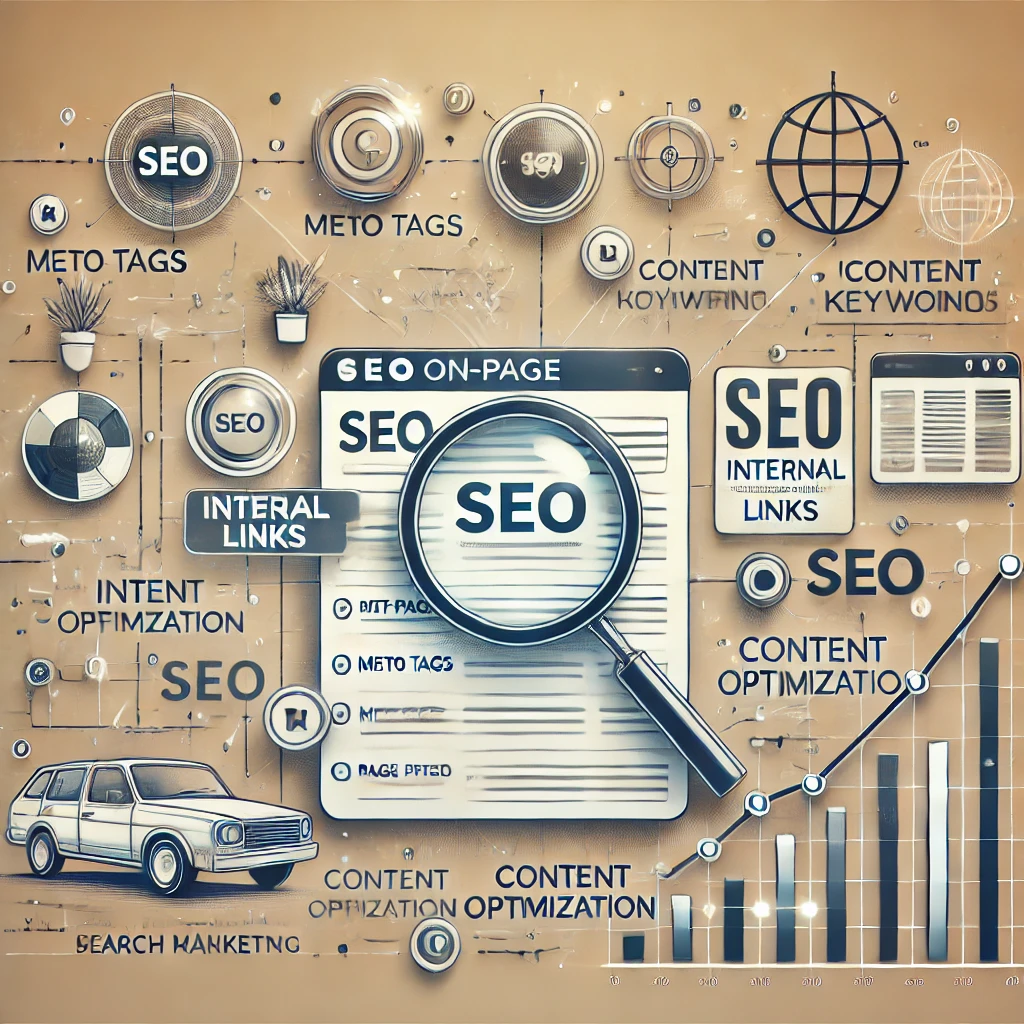Introduction

In today’s digital landscape, On-Page SEO is crucial for improving search engine rankings, driving traffic, and enhancing user experience. Whether you run a blog, an eCommerce store, or a business website, implementing the right On-Page SEO strategies can make a significant difference. In this comprehensive guide, we’ll explore the importance of On-Page SEO, key optimization techniques, and best practices to help you achieve higher rankings on Google.
What is On-Page SEO?
On-Page SEO refers to the optimization of individual web pages to improve search engine visibility and rankings. Unlike Off-Page SEO, which focuses on backlinks and external signals, On-Page SEO deals with elements within your website, including content, HTML source code, and site architecture.
By optimizing these elements effectively, you can ensure that search engines understand your content better, leading to higher rankings and increased organic traffic.
Key Elements of On-Page SEO
To enhance your website’s performance, here are some essential On-Page SEO elements to focus on:
1. Title Tags & Meta Descriptions
Title tags and meta descriptions are fundamental On-Page SEO components that directly impact your site’s click-through rate (CTR). A well-crafted title tag should:
- Include the primary keyword (e.g., On-Page SEO)
- Be compelling and concise (50-60 characters)
- Clearly describe the page’s content
Similarly, a meta description should:
- Be engaging and informative
- Contain relevant keywords naturally
- Stay within 150-160 characters
2. High-Quality Content
Content is king in On-Page SEO. To rank higher, your content should be:
- Unique & Valuable: Avoid duplicate content and provide value to your audience.
- Keyword-Optimized: Use target keywords strategically while maintaining readability.
- Well-Structured: Use headings (H1, H2, H3) and bullet points to enhance readability.
- User-Friendly: Ensure content is engaging and easy to navigate.
3. URL Structure
A clean and SEO-friendly URL structure improves both user experience and search engine indexing. Best practices include:
- Keeping URLs short and descriptive
- Including primary keywords (e.g., www.example.com/on-page-seo-guide)
- Avoiding unnecessary characters and numbers
4. Header Tags (H1, H2, H3)
Proper use of header tags enhances content hierarchy and readability. Search engines prioritize structured content, making it crucial to:
- Use H1 for the main title (only once per page)
- Utilize H2 and H3 for subheadings and content segmentation
- Incorporate relevant keywords naturally within headings
5. Image Optimization
Images play a crucial role in On-Page SEO, improving both engagement and accessibility. Follow these optimization tips:
- Use descriptive file names (e.g., on-page-seo-checklist.jpg)
- Add alt text to help search engines understand images
- Compress images to improve page speed
- Utilize responsive images for mobile-friendliness
6. Internal Linking
Internal linking strengthens website structure and helps search engines understand page relationships. Benefits of internal linking include:
- Enhancing user navigation
- Distributing link authority across pages
- Increasing dwell time by guiding users to related content
7. Mobile-Friendliness & Page Speed
Google prioritizes mobile-friendly websites, making responsive design essential. Ensure your site is:
- Mobile-optimized with a responsive layout
- Fast-loading by minimizing large images and unnecessary scripts
- User-friendly across all devices
Use Google’s PageSpeed Insights to analyze and improve load times.
8. Keyword Optimization & LSI Keywords
Effective keyword usage is key to On-Page SEO success. Follow these best practices:
- Place target keywords in titles, headings, and first 100 words
- Use LSI (Latent Semantic Indexing) keywords to enhance relevance
- Avoid keyword stuffing, which can harm rankings
9. Schema Markup & Rich Snippets
Schema markup helps search engines understand content better, enabling rich snippets in search results. Adding structured data can:
- Improve CTR with visually enhanced results
- Provide additional information (reviews, ratings, FAQs)
- Increase visibility in voice search results
10. User Engagement & Readability
Google values user engagement signals like time on page, bounce rate, and CTR. Improve engagement by:
- Writing clear and concise content
- Using short paragraphs and bullet points
- Adding interactive elements like videos and infographics
Best Practices for On-Page SEO in 2024

As search algorithms evolve, staying updated with the latest On-Page SEO trends is essential. Here are some future-proof strategies:
Website Analytics: Understanding & Optimizing Performance
Website analytics refers to the process of collecting, analyzing, and interpreting data from a website to measure its performance and optimize user experience. It helps businesses understand visitor behavior, improve SEO, and enhance conversions.
- Focus on E-E-A-T (Experience, Expertise, Authoritativeness, Trustworthiness): Build credibility through high-quality content.
- Improve Core Web Vitals: Ensure a smooth user experience by optimizing speed, interactivity, and visual stability.
- Leverage AI & Content Personalization: Use AI tools to analyze user behavior and deliver tailored content.
Conclusion
Mastering On-Page SEO is the key to higher search rankings and improved user experience. By optimizing title tags, meta descriptions, content, URLs, and other essential elements, you can significantly boost your website’s visibility.
SEO is an ongoing process, so stay updated with the latest trends and continuously refine your strategy. Start implementing these On-Page SEO techniques today, and watch your website climb the search engine rankings!
By following these On-Page SEO strategies, you’ll set yourself up for long-term success in the digital world. What techniques have worked best for you? Share your insights in the comments below!
Thank you so much